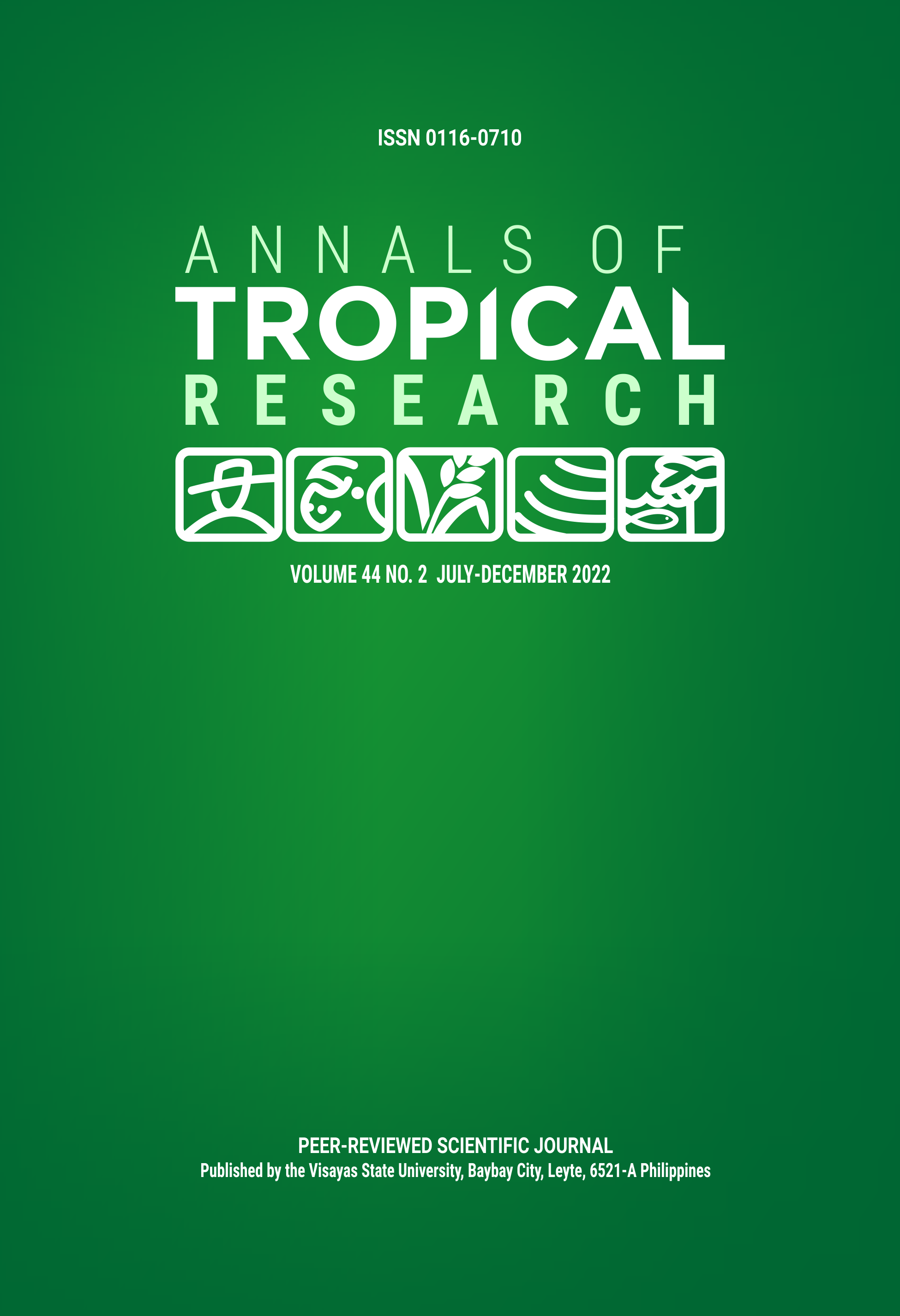Molecular and morpho-agronomic traits for vegetative stage drought tolerance in some rainfed elite rice lines
DOI:
https://doi.org/10.32945/atr4422.2022Keywords:
Drought tolerance, Marker-assisted Selection, SSR markers, Rainfed lowland riceAbstract
Selection of drought-tolerant rice genotypes is still one of the most vital challenges in rice research and the use of molecular markers may offer a promising approach to fast track the selection and development of drought-tolerant rice. The aim of our study is to identify drought-tolerant traits, in selected rainfed elite rice lines, expressed during drought stress at the vegetative stages 20-32 DAS and 30-42 DAS. The study also validated the presence of SSR markers linked to drought tolerance. All morpho-agronomic traits examined in the study were significantly affected by drought, except for root length during 30-42 DAS of drought imposition. Drought significantly reduced the plant height, number of tillers, leaf area, and root number resulting in a significant reduction in root and shoot dry weight. On the other hand, an increase in total nodal root length was observed in all test genotypes except for AL-55, AL-97, and susceptible check PSB Rc82 under both drought conditions. All parameters examined in this study are useful traits for drought tolerance in rice, however responses might be genotype-dependent. The highest correlation was shown by root:shoot ratio (r=0.94, r=0.78) at 20 DAS and (r=0.89, r=0.67) at 30 DAS under well-watered and drought conditions, respectively. Seven amplified markers were present in the test genotypes except for RM 525, RM 60, RM 201, RM 1141. These four markers were absent in the drought-susceptible check PSB Rc82, hence, these markers may be used in selecting drought-tolerant genotypes through marker-assisted selection.
Downloads
Submitted
Published
How to Cite
Issue
Section
License

This work is licensed under a Creative Commons Attribution-NonCommercial-ShareAlike 4.0 International License.











